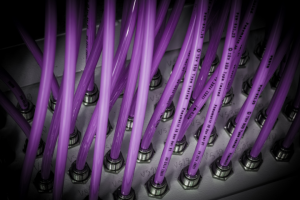
Finding the right hose for a compressed air system is essential for efficient and safe operation, and for avoiding maintenance issues arising from premature part failure. Selecting the right hose requires careful consideration of several factors, including working pressure, the physical parameters of your operating environment, and the intended air flow rate.
In this article, we will discuss these important factors and how to choose the best hose for your compressed air system.

Working Pressure Of The Hose
The most important factor to consider when choosing a hose for your compressed air system is its working pressure rating. This is the maximum amount of pressure (given in BAR or psi) that can be safely exerted on the hose without it bursting or failing. Each type of hose has a maximum working pressure designated by its manufacturer, and it’s crucial not to exceed this. To give yourself a working buffer, select a hose with a working pressure rating higher than what you anticipate needing in order to ensure maximum safety and reliability in your system.
Physical Parameters Of The Environment
The physical parameters of your environment will affect the performance and durability of your hose and have a strong influence on the type of hose and material most suited to your application.
Factors to consider include:
- Temperature range of the fluid
- External temperature fluctuations and variability
- Humidity and moisture
- Sunlight/UV exposure
- Chemical exposure – some fluids may place the hose at greater risk of corrosion or degradation.
- Abrasion resistance
- Antimicrobial resistance
- Vibration exposure
Depending on where you are using the hose and the type of application, you may need to select one with special features such as UV protection or a chemical-resistant coating.
Air Flow Rate
The last factor is the air flow rate through the hose itself. This usually measured in CFM (Cubic Feet per Minute) and indicates how much compressed fluid can pass through the hose safely at any given time without placing the component risk. The maximum air flow rate will normally be stated by the hose manufacturer and is affected by pipe diameter, pressure rating, and material composition. It’s important to select a hose with the appropriate air flow rate so that it can handle all your needs without becoming clogged or blocked due to insufficient airflow.
Materials Used For Pneumatic Tubes
There are several polymer materials used to manufacture pneumatic hoses, chosen for their resistance to various external factors, as well as their pressure resistance and operating temperature range.
- Polyurethane
- Polyethylene
- Teflon (PTFE- polytetrafluoroethylene)
- RILSAN – polyamide PA11
- TEKALAN – polyamide PA12
Selecting The Right Pneumatic Tubing For Your Application
If you’d like to speak to one of our technicians about choosing the right type of pneumatic hose for your application to maximise durability and performance, please call Hydrastar today on 01353 721704.

Image Source: Canva
